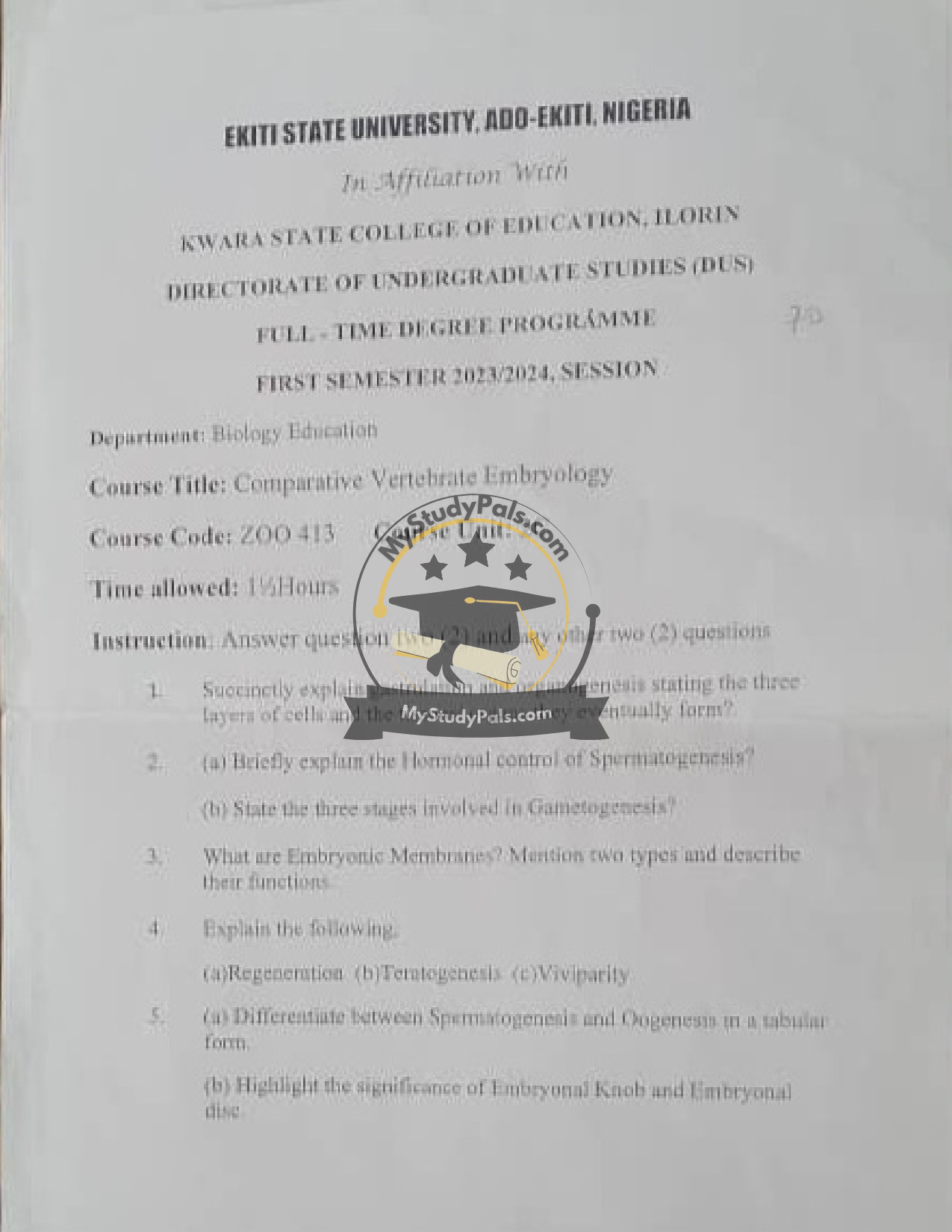—
Question 1:
Answer:
Gastrulation is the process in early embryonic development where the blastula reorganizes into a three-layered structure called the gastrula. These three germ layers are:
1. Ectoderm – Forms the skin, nervous system, and sensory organs.
2. Mesoderm – Develops into muscles, bones, circulatory system, and reproductive organs.
3. Endoderm – Gives rise to the digestive tract, lungs, and associated glands.
Organogenesis follows gastrulation, where these germ layers differentiate further to form specific organs and tissues.
—
Question 2(a):
Answer:
The hormonal control of spermatogenesis involves:
– GnRH (Gonadotropin-Releasing Hormone) from the hypothalamus stimulates the pituitary gland.
– The pituitary releases FSH (Follicle-Stimulating Hormone), which acts on Sertoli cells to support sperm development.
– LH (Luteinizing Hormone) stimulates Leydig cells to produce testosterone, essential for spermatogenesis.
– Testosterone and inhibin provide negative feedback to regulate hormone levels.
Question 2(b):
Answer:
The three stages of gametogenesis are:
1. Mitotic proliferation – Germ cells divide to increase in number.
2. Meiosis – Chromosome number is halved to produce haploid gametes.
3. Differentiation – Maturation into functional sperm or ova.
—
Question 3:
Answer:
Embryonic membranes are extraembryonic structures that support and protect the developing embryo. Two types and their functions are:
1. Chorion – Facilitates gas exchange and contributes to placenta formation in mammals.
2. Amnion – Forms a fluid-filled sac that cushions the embryo against mechanical shocks.
—
Question 4:
Answer:
(a) Regeneration – The process by which some organisms regrow lost or damaged tissues or body parts (e.g., starfish regrowing arms).
(b) Teratogenesis – The disruption of normal embryonic development, leading to congenital abnormalities (caused by toxins, infections, or radiation).
(c) Viviparity – A reproductive mode where offspring develop inside the mother’s body and are born live (e.g., humans, most mammals).
—
Question 5(a):
Answer:
| Spermatogenesis | Oogenesis |
|———————————————|——————————————–|
| Occurs in testes. | Occurs in ovaries. |
| Produces four functional sperm per meiosis. | Produces one ovum and polar bodies. |
| Continuous process in males. | Cyclic and completes after puberty. |
Question 5(b):
Answer:
– Embryonal Knots (Node): A critical signaling center in vertebrate embryos (e.g., primitive node in humans) that organizes body axis formation.
– Embryonic Disc: The bilaminar structure (epiblast and hypoblast) that gives rise to the three germ layers during gastrulation.
—


